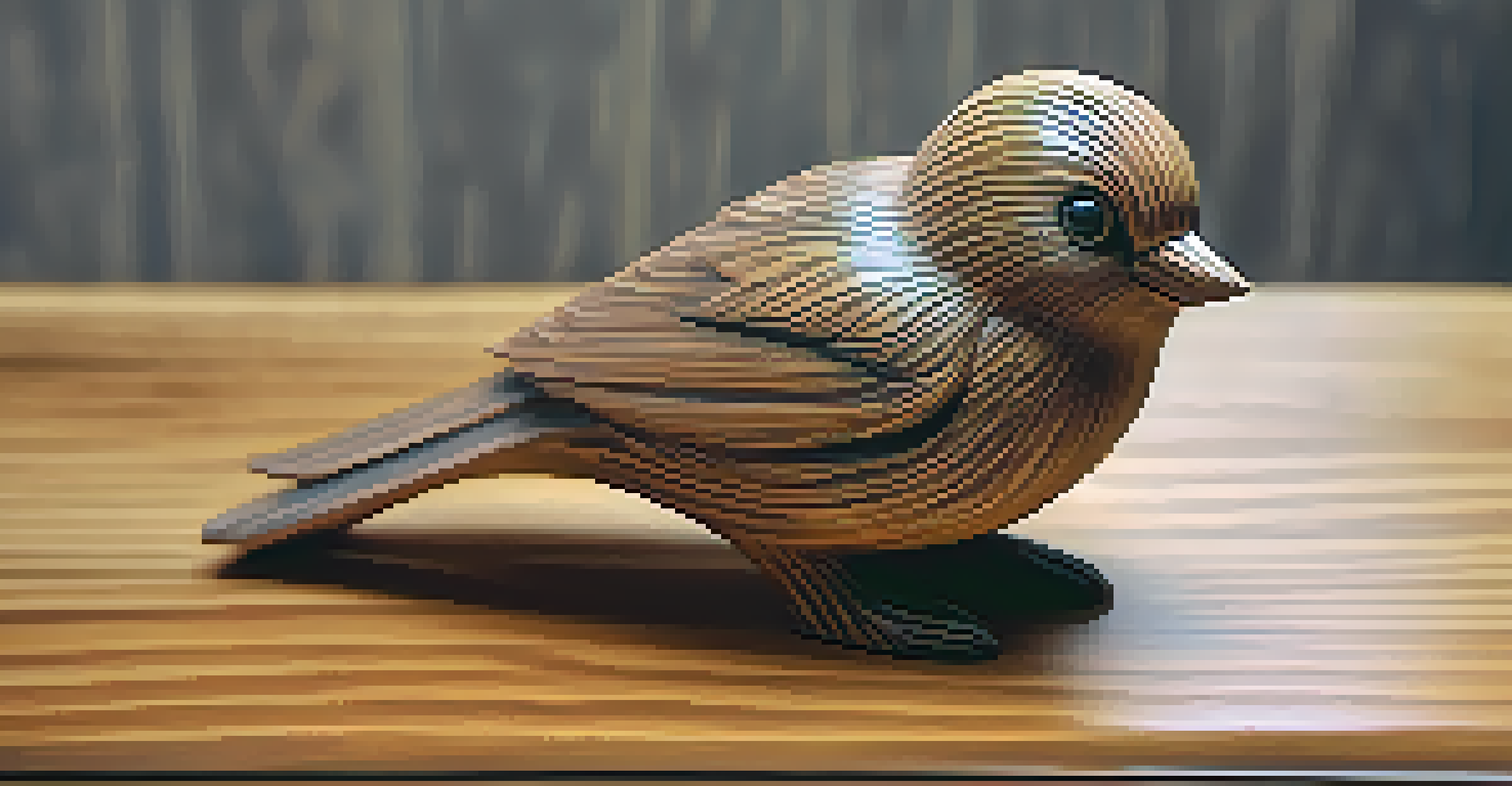Carving for Fun: Engaging Activities for Beginners to Try

Understanding the Basics of Carving for Beginners
Before diving into carving, it’s essential to grasp the fundamentals. Carving is about shaping materials, often wood or soap, into beautiful forms using specific tools. Beginners should start with soft materials, making it easier to practice and develop skills.
The only way to do great work is to love what you do.
Choosing the right tools can make all the difference. A basic carving kit usually includes a knife, gouges, and some safety gear. Familiarizing yourself with these tools not only boosts confidence but also enhances creativity as you explore their potential.
Lastly, remember that carving is as much about patience as it is about skill. Every master was once a beginner, so embrace the learning process and don't rush. Celebrate small victories along the way, and soon you’ll see your skills flourish!
Essential Safety Tips for Beginner Carvers
Safety should always come first when picking up carving tools. Start by investing in a good-quality carving glove that protects your hands from slips and accidents. A little precaution goes a long way in ensuring a fun and safe experience.

It’s also important to keep your workspace tidy and well-lit. This reduces the chance of accidents and helps you focus better on your carving. Remove any distractions and make sure you have ample space to work comfortably.
Start with the Right Tools
Choosing the appropriate carving tools and materials is essential for beginners to build confidence and creativity.
Lastly, always cut away from your body. This simple rule can prevent injuries and keep your carving experience enjoyable. By following these safety tips, you can carve with confidence and peace of mind.
Simple Projects for Beginners to Start Carving
A great way to ease into carving is by starting with simple projects. One popular beginner project is a basic spoon. This task not only introduces essential carving techniques but also results in a functional piece that you can use daily.
Creativity takes courage.
Another fun project is carving a small animal figure, like a bird or a fish. These shapes are forgiving, allowing you to practice your skills while creating something cute and decorative. Plus, they make great gifts for friends and family!
Finally, try your hand at soap carving. Soap is soft and easy to shape, making it perfect for beginners. With just a bar of soap and a few basic tools, you can create intricate designs without the pressure of working with harder materials.
Exploring Different Carving Techniques
As you become more comfortable with carving, you might want to explore different techniques. Whittling, for example, involves removing small pieces of wood to create shapes, while chip carving focuses on removing chips from the surface to form intricate patterns.
Relief carving is another fascinating technique where designs are carved into the surface of a material, creating a three-dimensional effect. This method can be both challenging and rewarding, allowing for detailed artwork that stands out.
Prioritize Safety While Carving
Implementing safety measures, such as using gloves and maintaining a tidy workspace, ensures a secure and enjoyable carving experience.
Each technique has its own tools and methods, so take your time to experiment and find what resonates with you. The beauty of carving lies in its variety, and exploring different techniques can keep your creative journey exciting.
Joining a Carving Community or Class
One of the best ways to enhance your carving skills is by joining a community or taking a class. Many local craft stores or community centers offer carving workshops where you can learn from experienced instructors and meet fellow enthusiasts.
Being part of a carving community not only provides you with valuable tips and techniques but also offers motivation and encouragement. Sharing your progress and challenges with others can make the learning process much more enjoyable.
Online forums and social media groups are also great places to connect with fellow carvers. You can share your work, ask for advice, or simply find inspiration by seeing what others are creating. The support from a community can be incredibly empowering.
The Benefits of Carving Beyond Just a Hobby
Carving is not only a fun pastime but also offers numerous benefits for your mental and emotional well-being. Engaging in hands-on activities encourages mindfulness, allowing you to focus on the moment and forget about stressors.
Moreover, carving can boost your creativity and problem-solving skills. As you work on different projects, you’ll learn to think outside the box and approach challenges with a fresh perspective. This can translate into other areas of your life, enhancing overall creativity.
Join a Carving Community
Connecting with fellow carvers through classes or online platforms provides motivation, support, and valuable learning opportunities.
Lastly, the sense of accomplishment that comes from completing a carving project is incredibly fulfilling. Each finished piece is a testament to your hard work and dedication, which can significantly boost your confidence and motivate you to tackle even more complex projects.
Showcasing Your Carving Creations
Once you’ve created a few carving masterpieces, it’s time to showcase your work! Sharing your creations with friends and family can bring joy and inspire others to explore carving themselves. Consider hosting a small exhibition in your home or at a local community center.
Social media platforms are also fantastic for displaying your work. Create an account dedicated to your carving journey, where you can share photos, progress updates, and even tutorials. This can help you build a community around your passion and connect with other carvers worldwide.

Lastly, don’t shy away from entering local craft fairs or competitions. These events can provide excellent exposure and feedback on your work. Plus, you might just inspire someone else to pick up a carving tool and start their own journey!